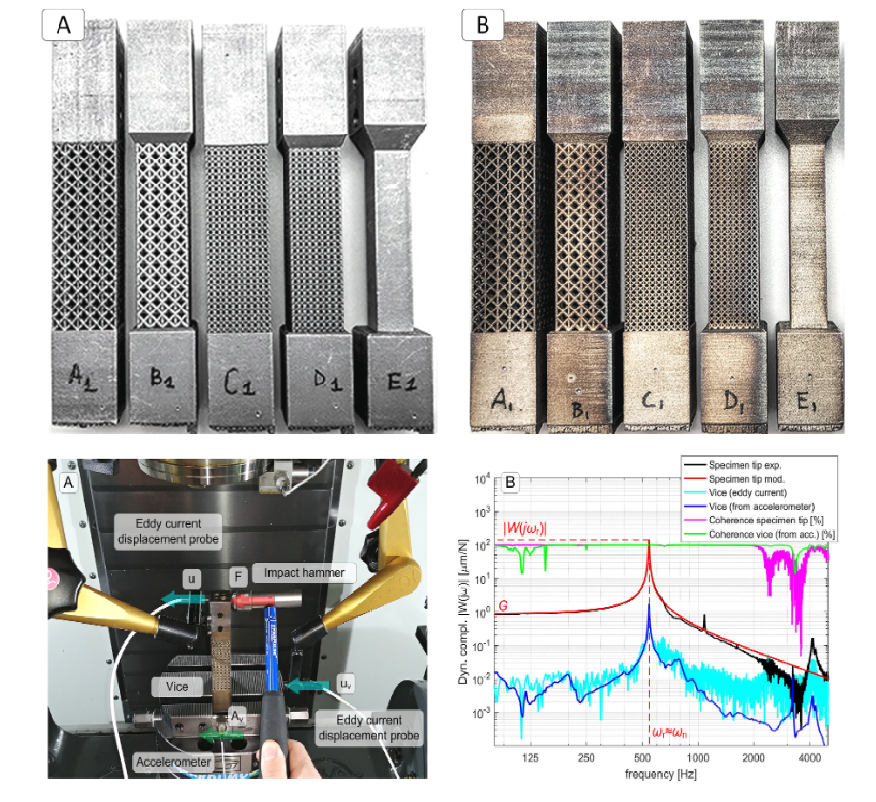Modern additive manufacturing technologies allow the creation of parts characterized by complex geometries that cannot be created using conventional production techniques. Among them the Selective Laser Melting (SLM) technique is very promising. By using SLM it is possible to create lightweight lattice structures that may fill void regions or partially replace bulk regions of a given mechanical component. As a consequence, the overall mechanical properties of the final component can be greatly enhanced, such as the resistance to weight ratio and its damping capacity against undesired vibrations and acoustic noise. Nevertheless, only a few research works focused on the characterization of the dynamic behavior of lattice structures, that were mainly investigated in the low frequency range or directly tested on some specific applications. In this work the dynamic behavior of lattice structures in the medium-high frequency range was experimentally investigated and then modelled. For this purpose, different types of lattice structures made of AlSi10Mg and AISI 316L were measured. Experimental modal analysis was performed on the obtained specimens in order to assess the influence of lattice material and unit cell geometry on their global dynamic behavior. Experimental results revealed that lattice structures have superior damping characteristics compared to solid materials having an equivalent static stiffness. Eventually, the classic Rayleigh model was found to be adequate – with some approximation – to explain the damping behavior of a generic lattice structure.


